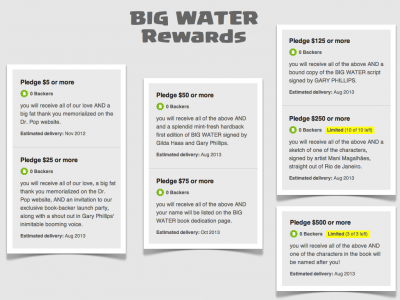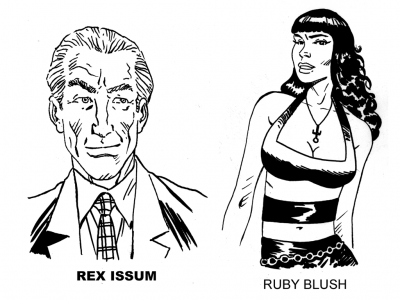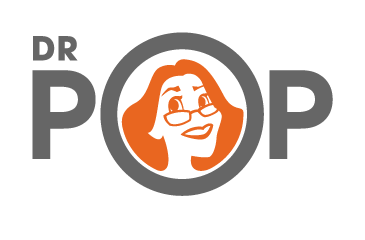 At our last Dr. Pop retreat, we decided that we wanted to experiment with important content in a story-telling way, and decided to create a graphic novel to get into one of the biggest environmental equity problems in the world….
At our last Dr. Pop retreat, we decided that we wanted to experiment with important content in a story-telling way, and decided to create a graphic novel to get into one of the biggest environmental equity problems in the world….
WATER
We were inspired by our neighbors and friends in the actual town of Maywood, CA, where water comes out of the tap the color of iced tea, and the contrast between their struggle for water rights and the surreal economy of designer water. Gary wrote a script, the team weighed in, and soon we were ready to rock and roll with our favorite cartoonist, Mani Manalhães, to draw up some fierce sequentials. The next steps was to plug in a great foreward, an afterward set of resources, and then publish the fabulous results.
We figured out that it would cost about $6,000 to pay Mani for his handiwork; for ISBN, copyright, and miscellaneous fees; and to publish a run of the graphic novel in hardback.
We (very) briefly considered dividing up the costs, but that would have caused us to forego other things — like food and rent and care of loved ones.
So we decided to take our project to the people. We had all supported our friends’ projects in the past by making a contribution towards their initiatives. We decided to crowdsource our project by launching a Kickstarter campaign. For those of you who are considering the same, here is a step-by-step account of what we did and what we have learned so far.
WHAT IS KICKSTARTER?
Kickstarter is one of several sites that are structured to help you reach out to others and ask them to support your creative project with a financial contribution –– a social network for small amounts of venture capital. Typical Kickstarter projects, like ours, seek to raise less than $10,000 (although there are a handful that have raised a million or more).
Here’s how it works:
1. Pick a project and make sure it fits into Kickstarter’s guidelines. A project is something that has a beginning and an end and a product. No fundraising drives, operating costs, or funding your day-to-day survival. An actual project. Our project was the BIG WATER graphic novel.
2. Pick a goal. How much do you want to raise? Kickstarter is an all or nothing proposition. If you raise your goal, Kickstarter makes sure that their fees and the fees that Amazon charges (Amazon handles the transactions) come off the top. In exchange for that Kickstarter provides you with a simple online platform for telling your story, communicating with backers, organizing your records, and fulfilling the pledges that people make to your project. If you don’t raise your goal, your supporters keep their money and you get nothing (and neither does Kickstarter or Amazon). So pick a goal that makes sense for your project and that you think you can raise, and then add on another 10% for Kickstarter and Amazon’s bump. We moved our original $6,000 goal up to $7,000.
3. Choose a length of time for your campaign. Most Kickstarter campaigns last for 30-45 days, some for as long as 60 days. When you are making this decision, consider how much focused attention you can bring to the effort (and still do your day job). We decided to do a 30-day campaign.
 4. Create your site. This involves doing a short video telling the world about it. This is not a Kickstarter requirement, but sites with videos are more successful (50%) than sites without (30%) and videos have thus become an expectation in Kickstarter’s world). You will need to provide a pithy story about your project. And you will need to come up with a list of rewards that will be assigned to an array of backer contribution levels. Here’s our site and how we structured our rewards.
4. Create your site. This involves doing a short video telling the world about it. This is not a Kickstarter requirement, but sites with videos are more successful (50%) than sites without (30%) and videos have thus become an expectation in Kickstarter’s world). You will need to provide a pithy story about your project. And you will need to come up with a list of rewards that will be assigned to an array of backer contribution levels. Here’s our site and how we structured our rewards.
5. PLAN your campaign. This is the main contribution that we have to offer prospective Kickstarters. As in life, preparation is everything. And it is likely that lack of preparation, organization, and planning accounts for why:
- 11% of Kickstarter projects get no backing at all. Zero. Zip.
- 60% of Kickstarter projects do not make their goal. (Which also amounts to zero and zip).
The operative word in a Kickstarter campaign isn’t kicking or starting. The operative word is CAMPAIGN.
A campaign is an event that consists of:
- a clear fundraising goal (in our case, $7,000) and time-frame (in our case, 30 days)
- an audience (real people who you hope will back your project)
- a compelling message (the story of your project)
- communication channels (the kickstarter site, email, facebook, and off-line face-to-face conversations)
- a plan for getting all of that done
We’ve already talked about picking a fundraising goal and a time-frame. So here’s a run-down the other items on the list:
AUDIENCE
1. Make a list of everyone you know who could possibly contribute to your campaign and then build a picture of how any people you think could support your project at various giving levels. How many people can give $5, $25, $50…$500? If you can’t make that add up to your goal, then you are going to have a problem raising it. Our Dr. Pop crew had a conversation about this before we even signed on to Kickstarter. Here’s what our first draft looked like.
|
|
Number of donors |
Donation Level |
Total Amount |
|
2 |
$500 |
$1000 |
|
|
4 |
$250 |
$1000 |
|
|
10 |
$100 |
$1000 |
|
|
20 |
$50 |
$1000 |
|
|
25 |
$40 |
$1000 |
|
|
25 |
$25 |
$625 |
|
|
25 |
$10 |
$250 |
|
|
25 |
$5 |
$125 |
|
|
TOTAL |
136 |
|
$6000 |
We then figured out what each of us thought we could realistically muster. Working this out in advance gave our team an idea of what it would take to get it done and confidence that we could do it. Figuring out a range of giving early will come in handy later on when you need to choose your Kickstarter pledge levels and rewards.
2. Collect contact information of all potential backers. Make sure you have emails and/or facebook contacts for everyone on your list, and if you are a team, who the best person is to make the ask.
3. Provide a plan B for offline backers. Kickstarter is an online engagement. However, some people who want to fund your project won’t do online transactions, for whatever reason, no way, no how. So it is in your interest to have a plan B, for people to contribute by check or cash. In our case this occurred with about 15 of our backers, who ended up writing checks to Dr. Pop and mailing them to our P.O. box. Any money you receive directly will not show up in your Kickstarter database, so make sure to keep good records of these contributions and contributors so that you can include them in any publicly thank them and provide them with promised rewards.
4. Figure out how are you going to let your audience know that you have launched a Kickstarter campaign. You can put up a great Kickstarter page, but none of that will work if nobody knows it is there. We used our Dr. Pop enews, personal emails, and facebook to connect people to our Kickstarter website. Personal emails were the most effective –– crowdsourcing is about people asking people. Facebook was a great way for others to pass on the word. And we even received a couple of contributions from people we never met just from being on Kickstarter.
5. Consider a launch party. We decided to have a live in-person party in Los Angeles where we would launch the site, enlist backers, and make sure that so no one would have to be the first one in by making that a collective endeavor. We invited people to our house in L.A., had some refreshments, showed our video, launched the site [It’s Live!], and had several laptops around so people could pledge there and then. We actually raised half of our goal as a result of the party, had a great time with our friends, and used photos from the party for our first update on Facebook, Kickstarter, and in personal emails.
STORY
1. Write out a description of your project. Read it out loud. Show it to some people. Now make it shorter and punchier and do that again.
2. Video While there is no requirement to include a video on Kickstarter, projects with videos do better than projects without. So make a short video –– it can be one or two minutes in length. Unless your project is a film project, your production values don’t have to be stunning. But your message has to be clear and engaging. Go to Kickstarter and troll the many, many projects there and you’ll get some good ideas. Our little video, is basically me and Gary talking to our friends, telling them about the project. It’s only a minute and a half (and I bet you can figure out ways to make it shorter).
 3. Give people a taste of your project. Our project is a graphic novel, we already had the script, and we were asking people for money to get it illustrated and published. We had also asked our artist, Mani, to draw up a couple of the characters and then we used them to help tell our story to give our audience a taste of our product and to entertain.
3. Give people a taste of your project. Our project is a graphic novel, we already had the script, and we were asking people for money to get it illustrated and published. We had also asked our artist, Mani, to draw up a couple of the characters and then we used them to help tell our story to give our audience a taste of our product and to entertain.
COMMUNICATION
1. Create a calendar. Thirty days goes by pretty quickly, so it is very useful to know what you are going to do and how you are going to do it ahead of time. So, take out a piece of paper, a calendar, a spreadsheet, or whatever you prefer and map out when and how and who is going to do what during your campaign.
Are you going to update your audience every week? What channels are you going to use? How often are you going update your backers to keep them in the loop? (there is a tool for doing that on Kickstarter). How often are you going to reach out to your potential backers on facebook (and your website if you have one) to keep your story going and excitement flowing? When and how often will you be emailing potential backers to make a personal request for a specific amount? And, if you are going to have a launch party, then that is an event that will require communication working backwards from that date.
Here’s an example of what our BIG WATER to-do list looked like [in reverse order of accomplishment].
2. Create a story arc. If you know that you are going to send our a message a week for four weeks, you might sketch out what those missives might look like in advance to build the story of your campaign. Planning this in advance provides you with some basic ideas to return to, the same time that may be innovating as you go to take advantage of unexpected opportunities.
For example, at our party, Dr. Pop blogger Jackie Cornejo and her friends decided that they would pool their resources to go after our highest pledge reward and create their own character (in our campaign we reserved 3 slots for $500 pledges that would be rewarded by having a character in the novel named after them). Team Jackie created Patrick Scones, a mildly annoying character who possesses every-day qualities that they simply and collectively hate in their fellow human beings [he goes to concerts and stands in front of short girls!]. Jackie fronted the money on her credit card and was thus very motivated to build her Patrick Scones team with some additional backers. They even created a little video about Mr. Scones that we used in our backer updates.
 3. Thank your backers. Let your backers know that you appreciate their support. On Facebook, you can link your backers who are friends, which also helps build your outreach. One of our basic backer rewards was a shoutout on Dr. Pop. I used Wordle to make the word cloud shoutout graphic.
3. Thank your backers. Let your backers know that you appreciate their support. On Facebook, you can link your backers who are friends, which also helps build your outreach. One of our basic backer rewards was a shoutout on Dr. Pop. I used Wordle to make the word cloud shoutout graphic.
LAUNCH!
There are some technical details to attend to before you launch your project:
1. Kickstarter Approval. Your project needs to be approved by Kickstarter. This can take anywhere from a few hours to a few days, so build that into your timeline.
2. Amazon Account. You need to set up an account with Amazon which will be used to collect funds from your backers and then disburse them to you following your successful campaign. This also requires approval, will take a little time, and is a requirement of any Kickstarter campaign. One other thing to plan for –– whoever owns the account cannot contribute to the Kickstarter campaign.
3. Launch! Once you click the LAUNCH button, all operations are go, no turning back, and the countdown towards your goal begins. Kickstarter provides you with lots of useful information and tools to communicate with your audience, to see how much you have raised, how many backers have contributed, and how many days are left in your campaign.
KEEP IN TOUCH
As you go through your project, give people updates. For example, it will take nine months to a year to get BIG WATER drawn and published and distributed, and this was all disclosed to our folks from the outset. So, even though our campaign was successful, it is still a work in progress. We’ll be updating our backers (and our Dr. Pop friends who may not have backed) at key stages of our project, and in the process, help build an audience for the book.
Questions? Comments? Planning your own campaign? Keep us in the loop.

Dear Gilda,
The one thing I learned from you which no one can put a price on- is your willingness to
share knowledge. If we are going to build a movement for social change we can no longer
organize in silos. We must share knowledge, resources both human and financial and create
a new vision. I so much appreciate the Dr Pop Website and all that I have learned from you over the years. Keep it coming. I love learning.
In solidarity,
Rob Robinson
Take Back the Land
Thanks, Rob.
Of course, we benefitted from the advice and suggestions from friends who had already done successful Kickstarter campaigns (Beverley Keefe and Kristen Schwartz) and the experience of having a small part in other creative projects (Gary and I helped out on Kim’s book project video. See if you can find us).
So, in a way, we’re just passing it all forward…